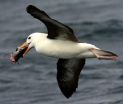(Press-News.org) An international team led by glaciologists from the University of Colorado Boulder and Trent University in Ontario, Canada has completed the first mapping of virtually all of the world's glaciers -- including their locations and sizes -- allowing for calculations of their volumes and ongoing contributions to global sea rise as the world warms.
The team mapped and catalogued some 198,000 glaciers around the world as part of the massive Randolph Glacier Inventory, or RGI, to better understand rising seas over the coming decades as anthropogenic greenhouse gases heat the planet. Led by CU-Boulder Professor Tad Pfeffer and Trent University Professor Graham Cogley, the team included 74 scientists from 18 countries, most working on an unpaid, volunteer basis.
The project was undertaken in large part to provide the best information possible for the recently released Fifth Assessment of the Intergovernmental Panel on Climate Change, or IPCC. While the Greenland and Antarctic ice sheets are both losing mass, it is the smaller glaciers that are contributing the most to rising seas now and that will continue to do so into the next century, said Pfeffer, a lead author on the new IPCC sea rise chapter and fellow at CU-Boulder's Institute of Arctic and Alpine Research.
"I don't think anyone could make meaningful progress on projecting glacier changes if the Randolph inventory was not available," said Pfeffer, the first author on the RGI paper published online today in the Journal of Glaciology. Pfeffer said while funding for mountain glacier research has almost completely dried up in the United States in recent years with the exception of grants from NASA, there has been continuing funding by a number of European groups.
Since the world's glaciers are expected to shrink drastically in the next century as the temperatures rise, the new RGI -- named after one of the group's meeting places in New Hampshire -- is critical, said Pfeffer. In the RGI each individual glacier is represented by an accurate, computerized outline, making forecasts of glacier-climate interactions more precise.
"This means that people can now do research that they simply could not do before," said Cogley, the corresponding author on the new Journal of Glaciology paper. "It's now possible to conduct much more robust modeling for what might happen to these glaciers in the future."
As part of the RGI effort, the team mapped intricate glacier complexes in places like Alaska, Patagonia, central Asia and the Himalayas, as well as the peripheral glaciers surrounding the two great ice sheets in Greenland and Antarctica, said Pfeffer. "In order to model these glaciers, we have to know their individual characteristics, not simply an average or aggregate picture. That was one of the most difficult parts of the project."
The team used satellite images and maps to outline the area and location of each glacier. The researchers can combine that information with a digital elevation model, then use a technique known as "power law scaling" to determine volumes of various collections of glaciers.
In addition to impacting global sea rise, the melting of the world's glaciers over the next 100 years will severely affect regional water resources for uses like irrigation and hydropower, said Pfeffer. The melting also has implications for natural hazards like "glacier outburst" floods that may occur as the glaciers shrink, he said.
The total extent of glaciers in the RGI is roughly 280,000 square miles or 727,000 square kilometers -- an area slightly larger than Texas or about the size of Germany, Denmark and Poland combined. The team estimated that the corresponding total volume of sea rise collectively held by the glaciers is 14 to 18 inches, or 350 to 470 millimeters.
The new estimates are less than some previous estimates, and in total they are less than 1 percent of the amount of water stored in the Greenland and Antarctic ice sheets, which collectively contain slightly more than 200 feet, or 63 meters, of sea rise.
"A lot of people think that the contribution of glaciers to sea rise is insignificant when compared with the big ice sheets," said Pfeffer, also a professor in CU-Boulder's civil, environmental and architectural engineering department. "But in the first several decades of the present century it is going to be this glacier reservoir that will be the primary contributor to sea rise. The real concern for city planners and coastal engineers will be in the coming decades, because 2100 is pretty far off to have to make meaningful decisions."
Part of the RGI was based on the Global Land Ice Measurements from Space Initiative, or GLIMS, which involved more than 60 institutions from around the world and which contributed the baseline dataset for the RGI. Another important research data tool for the RGI was the European-funded program "Ice2Sea," which brings together scientific and operational expertise from 24 leading institutions across Europe and beyond.
The GLIMS glacier database and website are maintained by CU-Boulder's National Snow and Ice Data Center, or NSIDC. The GLIMS research team at NSIDC includes principal investigator Richard Armstrong, technical lead Bruce Raup and remote-sensing specialist Siri Jodha Singh Khalsa.
NSIDC is part of the Cooperative Institute for Research in Environmental Sciences, or CIRES, a joint venture between CU-Boulder and the National Oceanic and Atmospheric Administration.
INFORMATION:
For more information on INSTAAR visit https://instaar.colorado.edu. For more information on NSIDC visit http://nsidc.org. For more information on GLIMS visit http://www.glims.org. For more information on Ice2Sea visit http://www.ice2sea.eu. For more information on CIRES visit http://cires.colorado.edu/index.html.
Contact:
Tad Pfeffer, CU-Boulder, 303-492-3480
tad.pfeffer@colorado.edu
Graham Cogley, Trent University, 705-742-0317
gcogley@trentu.ca
Jim Scott, CU-Boulder media relations, 303-492-3114
jim.scott@colorado.edu
International team maps nearly 200,000 global glaciers in quest for sea rise answers
2014-05-06
ELSE PRESS RELEASES FROM THIS DATE:
GW researcher looks 'inside the box' for a sustainable solution for intestinal parasites
2014-05-06
WASHINGTON (May 6, 2014) — According to the World Health Organization, more than 450 million people worldwide, primarily children and pregnant women, suffer illness from soil-transmitted helminths (STH), intestinal parasites that live in humans and other animals. Considerable effort and resources have been, and continue to be, spent on top-down, medical-based programs focused on administering drugs to control STH infections, with little success. John Hawdon, Ph.D., associate professor of microbiology, immunology, and tropical medicine at the George Washington University ...
Substantial improvements made in EPA's IRIS Program, report says
2014-05-06
WASHINGTON – A new congressionally mandated report from the National Research Council says that changes EPA has proposed and implemented into its Integrated Risk Information System (IRIS) process are "substantial improvements." While acknowledging the progress made to date, the report offers further guidance and recommendations to improve the overall scientific and technical performance of the program, which is used to assess the hazards posed by environmental contaminants.
In 2011, a Research Council committee reviewed EPA's IRIS assessment for formaldehyde and found ...
More support needed for teaching swimming in schools
2014-05-06
Britain could become a nation of non-swimmers if drastic changes aren't made to ensure all young people have access to adequate lessons and facilities, according to academics at the University of East Anglia (UEA).
Dr Craig Avieson and Dr Penny Lamb, of UEA's School of Education and Lifelong Learning, warn swimming provisions are falling to secondary physical education (PE) teachers, with 51 per cent of British children aged 7-11 unable to swim 25 metres. Children should be able to swim at least that length by the time they leave primary school, under curriculum requirements ...
Are we ready for contact with extraterrestrial intelligence?
2014-05-06
The SETI project scientists are known for tracking possible extraterrestrial signals, but now they are also considering sending messages from Earth telling of our position. A researcher from the University of Cádiz (Spain) questions this idea in view of the results from a survey taken by students, revealing the general level of ignorance about the cosmos and the influence of religion when tackling these matters.
The Search for ExtraTerrestrial Intelligence (SETI) project is an initiative that began in the 70s with funding from NASA, but that has evolved towards the collaboration ...
Mother's Day science: Reactions highlights amazing facts about pregnancy -- video
2014-05-06
WASHINGTON, May 6, 2014 — Pregnant women go through a lot to bring a baby into this world: 2 a.m. food cravings, hypersensitivity to certain smells and morning sickness, not to mention labor and delivery. In honor of Mother's Day, the American Chemical Society's (ACS') newest Reactions video highlights the chemistry behind a pregnant woman's altered sense of taste and smell, how mom's diet influences baby's favorite foods and other pregnancy phenomena. The video is available at http://youtu.be/Gnqjh-L4e9g
And because moms always deserve more, we've created a bonus video ...
State of the nation's egotism: On the rise for a century
2014-05-06
ANN ARBOR—Forget the "me" generation. A new analysis of long-term trends in egotism shows there's been a "me" century in America.
The analysis, conducted by researchers at the University of Michigan, shows that characteristics related to self-interest, compared to interest in the lives and needs of other people, was low during the 19th century but rose steadily after the turn of the 20th century.
"We found that self-interest tends to peak after economic booms," said William Chopik, a doctoral candidate in psychology at U-M and first author of the paper just published ...
Snacking contributes to fatty liver and abdominal obesity
2014-05-06
Researchers from The Netherlands found that snacking on high-fat and high-sugar foods was independently associated with abdominal fat and fatty liver (hepatic steatosis). According to the study published in Hepatology, a journal of the American Association for the Study of Liver Diseases, hypercaloric diet with frequent meals increases intrahepatic triglyceride content (IHTG) and fat around the waist, but increasing meal size did not.
Obesity is a global health concern with the World Health Organization reporting that more than 200 million men and close to 300 million ...
Scientists challenge FIFA: Save the 3-banded armadillo
2014-05-06
New research in Biotropica asks FIFA to follow through with its environmental claims. The 2014 FIFA (Fédération Internationale de Football Association) World Cup will be played in Brazil. Its "Football for the Planet" program aims to monitor greenhouse gasses, provide environmentally friendly stadiums, and better waste management. However, FIFA has not maximized this opportunity. In an article published in the upcoming issue, researchers challenge the role that FIFA and the Brazilian government play in protecting the environment, asking both to: protect 1,000 hectares ...
Mobile health apps lack behavior-change techniques
2014-05-06
Behavior-change techniques are not well represented in the marketing materials for top-rated physical-activity apps, according to a team of Penn State researchers.
They also found that two types of physical-activity apps are available on the market -- those that focus on educating users on how to perform different exercises and those that focus on supporting users' motivation for physical activity.
"The app marketplace is largely unregulated and users make decisions based on developers' descriptions of apps," said David Conroy, professor of kinesiology. "Our results ...
$200 bird scaring line for trawlers can cut albatross deaths by over 90 percent
2014-05-06
The sight of seabirds following trawlers in order to feast from discarded fish is a common maritime sight, but each year many thousands of seabirds are killed by overhanging cables or in nets. New research in Animal Conservation assesses mortality figures from South Africa to show that a simple bird scaring line can reduce the mortality rate by over 90%.
The research compiled data from five years of observations to compare current and historic mortality rates. Previous research shows that in 2006 approximately 18,000 seabirds were killed each year by the South African ...



